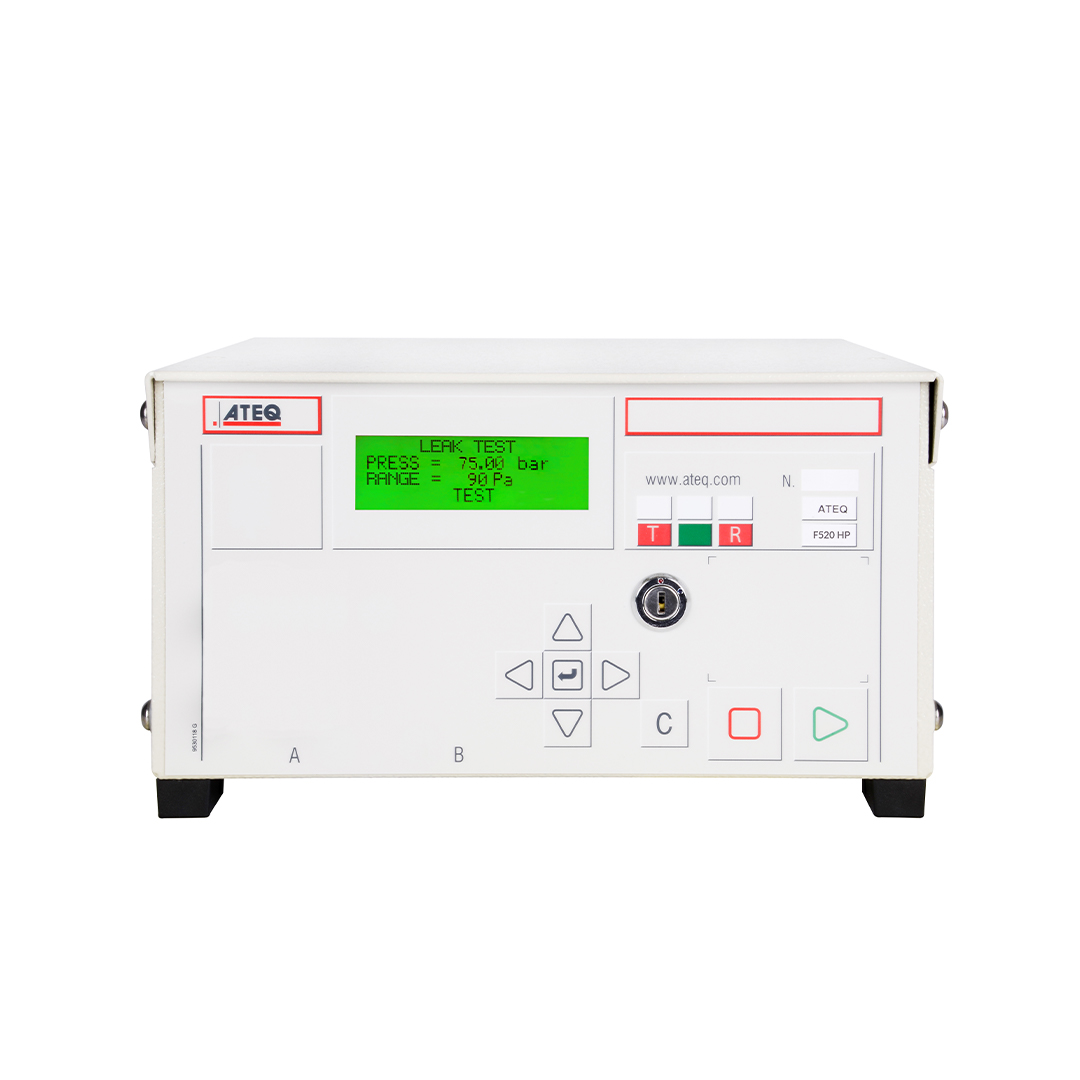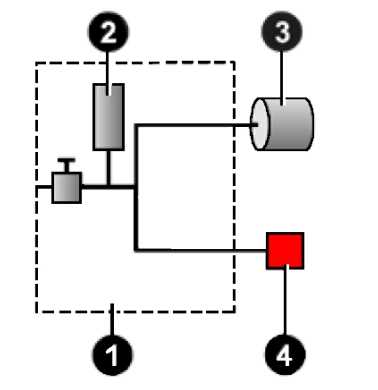

F520 HP – HIGH PRESSURE LEAK DETECTOR FOR PRODUCTION TESTING
Without any doubt, the smallest high-pressure leak detector on the market up to 100 bar. Specially adapted for automatic, semi-automatic or manual operation, the F520HP has a comprehensive range of standard specifications as well as a complete package of options and accessories.
F520 HP : APPLICATIONS
Catheters, refrigeration parts, oil radiators, HP tubes and pipes, valves, hydraulic brakes…
F520 HP : FEATURES
• Differential pressure decay leak measurement
• 1 measurement range (ΔP) F.S. : 5000 Pa
• 32 programs
• Languages (English + other one)
• Electronical pressure regulator 4 MPa
• Mechanical pressure regulator 8 MPa
TEST MODES :
• ∆P (Pa, 1/10 Pa)
• ∆P/t (Pa/s, 1/10 Pa/s)
• Flow units (mm3/s, cm3/s, cm3/min, cm3/h)
• Blockage test
• And others, depending on your applications
FLEXIBLE COMMUNICATION FORMAT :
• RS232 : printer /bar code reader /PC
• J5 : remote control
• RS485 : networking with other ATEQ’s instruments
MEASUREMENT CHARACTERISTICS :

F520 HP : SPECIFICATIONS
- PHYSICAL
- Weight : Approximately 7 Kg
- Dimensions : (WxHxD) 250x136x390 mm
- ELECTRICAL SUPPLY
- 24VDC/2A or 100-240VAC/50W
- EXTERNAL POWER SUPPLY
- 24 V DC – 2A
- Main power supply 110 – 230 V AC supplied
- INTERFACE
- Navigation Keys
- 4 lines LCD Screen Results Lights
- AIR SUPPLY
- Clean and dry air
- Air quality standard to be applied (ISO 8573-1)
- Clean and dry air
F520 HP : OPTIONS
• 7 inputs / 5 outputs
• Electronic regulator
• 6 x 24 V programmable outputs for external automation
• 2 analogue outputs: 0 – 10 V or 4 – 20 mA
• Profibus
F520 HP : FACTSHEETS
Detailed information about the F520 HP including features, specifications, etc.
F520 HP : TECHNOLOGY
By far the most popular technology, differential pressure decay uses a reference volume to test your part. This helps compensate for any ambient pressure or temperature variations as they occur on both parts simultaneously.
Only a leak on the test part will result in a movement of our transducer’s membrane.
The second advantage of this method is that the accuracy does not drop with the test pressure as the transducer is measuring pressure differences between the two circuits, as opposed to the traditional pressure decay technology that measures pressure drops against the atmosphere.
Direct measurement principle
The part under test 3 and the reference part 5 are filled to an identical pressure. A differential sensor 4 measures the pressure variation between the part under test 3 and the reference part 5. In some applications, the reference part can be replaced by a cap.

Desensitized test
This mode is used for the measurement of large leaks, when the reject level required is above the full scale of the differential sensor.
The test pressure is applied to the input of the part under test 3. The measurement is performed by the pressure sensor 2.
Other type of tests are available in option


